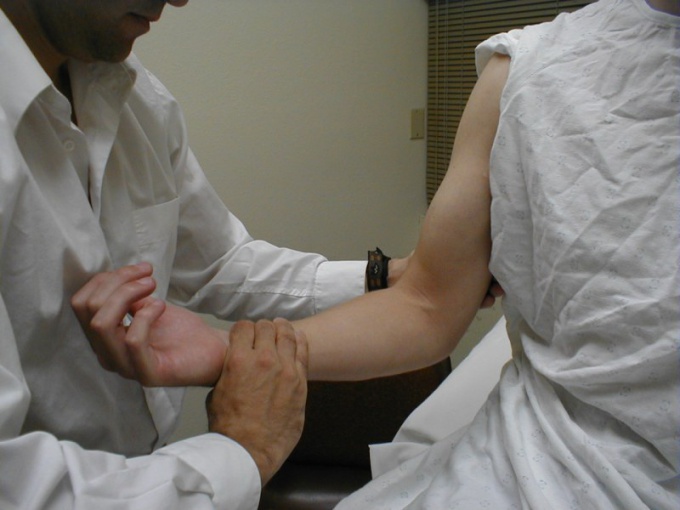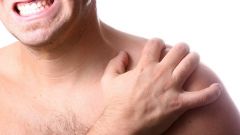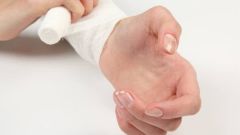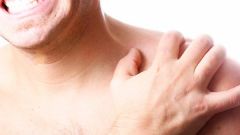Muscular damage as the cause of pain in forearm
Muscle tension leads to pain, first on the outer side of the forearm and on the inside. The pain is worse when lifting weights. In chronic overvoltages noted aching pain at compression of the fingers into a fist.
If muscle cramping occurs a sharp pain, accompanied by cramping muscle strain. Cramp can be caused by circulatory disorders or overwork of muscles.
Stretching of the forearm muscles is another common cause of pain. The tension manifests itself by swelling and soreness damaged muscles, palpation pain increases. Such violation may occur as a result of too sharp of a high-intensity loads.
The strain of the forearm muscles occurs as a result of their rapid and intense reduction or enlargement. Pain with anguish strong, after which it can subside for a while. Developing a hematoma, pain to palpation localized to the site of the tear.
Pathological processes in the joints and tendons as a cause of pain in the forearm. Fractures
Inflammation of the tendons the pain occurs during active movements of the limb passive motion almost painless. When movement of the affected tendon is noted, cracking on palpation – pain. The damaged area is red.
In dislocation of joints, their surfaces no longer touch because of protruding head of the bone can be noticed under the skin in the form of a tubercle. Joint mobility is limited, pain accompanies the movement of any intensity.
Fractures of the forearm can be divided into probable and reliable. In the first case, characterized by pain in all movements, swelling of the affected area. The mobility of the limbs is limited.
In the second case the hand is in an unnatural position, the fracture site is noted pathological mobility. You hear the crunch of the rubbing of the bone fragments. With an open fracture are visible bone fragments.
One of the most common places of fracture of the forearm is 3 cm above the wrist joint. To get injured when you fall on an outstretched hand
Arthritis – acute or chronic inflammatory process in the joint. The shape of the joint changes, there is a crunch during exercise. The mobility of the limbs is limited.
Nerve and vascular injuries
When narrowing or blockage of arteries of the upper extremities also causes pain in the forearm. This pathology is called atherosclerosis, the intensity of the pain increases under load.
In venous thrombosis the pain has characteristic features. It can be sharp or dull, aching, or spasmodic. It decreases when lifting the limbs up.
Another cause of pain in forearm – damage to nerve fibers. In particular, radial or ulnar nerve. The pain in these cases is bursting, monotonous character.
Pain in the forearm as a marker of other pathologies
As for the indirect causes of pain in the forearm, the first place are damages of the cervical and thoracic spine. There has not been the revolutions in the forearm. The pain is often piercing and other portions of the front limb, from the shoulder.
At pathologies of the cardiovascular system is also likely to cause forearm pain. For example, in myocardial infarction the pain is localized behind the breastbone. It radiates to the left shoulder or arm.
Other signs of myocardial infarction: sudden pallor, heaviness in chest, shortness of breath, dizziness. The pain does not disappears after taking nitroglycerin
With the defeat of the elbow and wrist joints gout marked burning, excruciating pain. One of the characteristic features of gout - the appearance of foci of pathological seal subcutaneous tissue. Such nodules are often localized on the ears, Achilles tendons, in places affected joints.



